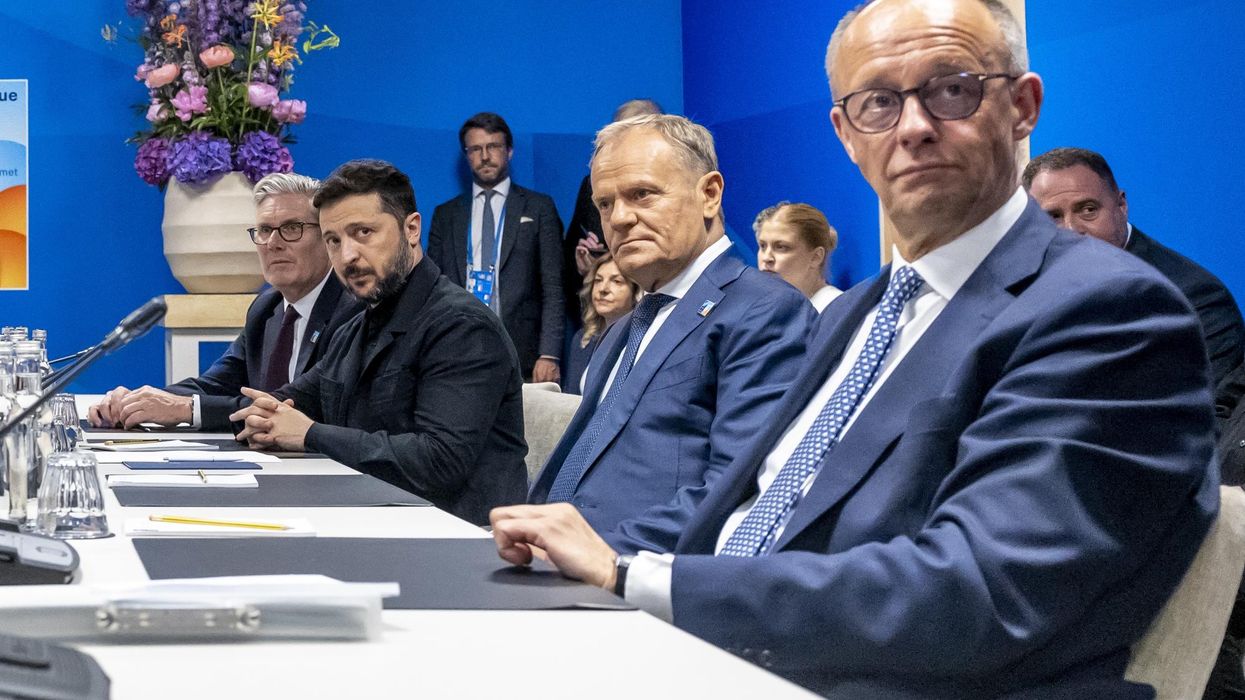Prime Minister Modi’s state visit to the United States last week offers a good opportunity to take stock of the U.S.-India strategic relationship. What drives it? How durable are its drivers? How should the relationship be defined so that it serves the interests of the American people and the region?
The visit featured much pomp and ceremony, with two dinners with President Biden, including a lavish state dinner, a 21-gun salute, a press conference, and meetings with the Indian diaspora and business leaders. The joint statement and associated fact sheet announced defense and technology deals (including the co-production of aircraft engines and the sale of drones), enhanced cooperation in space, an Indian Ocean dialogue, deeper education and skilling partnerships, an intent to open additional consulates, and plans to clear visa backlogs, among other things. But the visit by itself is only one event in what has been a steady progression over more than two decades of U.S.-India strategic convergence.
Despite the two leaders’ flowery rhetoric about common democratic values, the convergence has predominantly a single driver – countering China. The United States and India, like all major powers, do not conduct their foreign policy based on democratic values. They do so based on their material interests.
When the Clinton administration realized in the late 1990s that China could emerge as a major power, it began wooing India. Thus, the sanctions imposed in 1998 after India’s nuclear tests were eased, and a serious strategic dialogue began between top officials of both countries. The George W. Bush administration took a giant step forward by initiating a landmark nuclear deal in 2005, which was completed by 2008. India, until then a nuclear pariah, was essentially legitimized as a nuclear power. Since then, bilateral relations have been on a steady upswing, and Washington’s public criticism of domestic issues in India, which used to be harsh and frequent, has all but disappeared.
Since 2017, the United States has portrayed China as a major threat and a systemic challenge. Washington has also calculated that, while in the short term Japan and Australia are the most critical partners for countering China, India is the only power with the necessary heft to do the job in the long term.
India is more than happy to help on that front. New Delhi’s relations with Beijing started to go downhill after a tense standoff in the Himalayas in 2013, and matters have literally come to blows since then. The India-China border, hitherto lightly policed, has become massively militarized as a consequence.
These two trends have “overdetermined” Indo-U.S. alignment and given India strategic space to defy U.S. preferences on Russia. New Delhi has repeatedly abstained at the United Nations on resolutions on the Ukraine war and has massively increased its imports of Russian oil.
Thus, prime ministers and presidents will come and go, but the India-U.S. geostrategic relationship can be expected to remain buoyant for some years to come.
Still, could things sour between Washington and New Delhi in the event of an actual U.S.-China military crisis? Veteran scholar Ashley Tellis struck a decidedly pessimistic note in his recent article in Foreign Affairs, in which he argued that India is unlikely to offer “meaningful military contributions to defeat any potential Chinese aggression…in situations where its own security is not directly threatened.”
But Tellis may have been overstating his case. Few, if any, policymakers in Washington expect the Indian military to fight with the United States in the South China Sea or off the shores of Taiwan, the most likely theaters of any U.S.-China conflict.
But if “meaningful military contributions” mean intelligence sharing and the use of Indian facilities for logistical support, then India could well step up during a U.S.-China crisis. India and the United States signed a critical logistics agreement in 2016, which will facilitate such support. Intermediate scenarios include joint interdiction operations, possibly near the Strait of Malacca, as part of a U.S.-led blockade. Such actions are riskier for India, as China will likely consider them an act of war. The border tensions have forced India to pay greater attention to its northern frontiers, leaving less strategic room for expanding its maritime footprint (as Washington would prefer). Ultimately, India will make a political decision based on the specific context of the contingency.
Black swans, however, do lurk in the background and could create serious barriers to the developing relationship. These include a dramatic improvement in ties between Washington and Beijing or a major rapprochement between Beijing and New Delhi.
A major U.S.-China thaw would trigger nightmares in New Delhi, recalling the China-U.S.-Pakistan geopolitical front of the 1970s, which forced India to tilt markedly toward the Soviet Union. Such a development would be even worse for India in the current context when Russia and China have drawn much closer.
Similarly, an India-China reset would not be welcomed in the United States. The sharp deterioration in Sino-Indian ties since 2020 has been good news for China hawks in Washington, creating further opportunities for aligning India even more closely to the United States.
As can be expected from black swans, both scenarios are extremely unlikely. Washington is determined to pursue a strategy that amounts to limiting China’s military reach and economic rise as much as possible (though the latter has been officially denied by the White House). That strategy may be pursued recklessly or more cautiously, but it will be pursued. And India’s strategic elite, regardless of their domestic political leanings, now deeply distrust Beijing, holding a dark view of its intentions in the region.
But the drivers that are opening opportunities for deepening U.S.-India ties also carry their own risks. As I wrote in a Quincy Institute brief earlier, the heavy emphasis on military interoperability and integrating India into the U.S. security architecture in Asia is partly responsible for worsening India-China ties and feeds the growing cold war sentiment in Asia. U.S. quasi-alliance-building actions are likely to provoke more than they are to deter. For the United States, one of the risks is that India could be subject to even greater pressure from China, which would limit New Delhi’s options, slow its rise, and (ironically) result in a more unbalanced Asia and a higher risk of a destabilizing war.
A safer U.S. policy would be to rebalance the India relationship away from its military dimension, in part by demilitarizing the Quad. Washington should place a heavier emphasis on aiding New Delhi’s economic rise, including marshaling much greater investments aimed at “greening” the country’s economy. A successful India along these lines will expand opportunities for U.S. businesses and workers and help combat the climate crisis. It will also automatically serve as a check on Chinese dominance in Asia without an alliance-like relationship that risks entrenching itself and contributing to bloc formation in the region and the world.
















